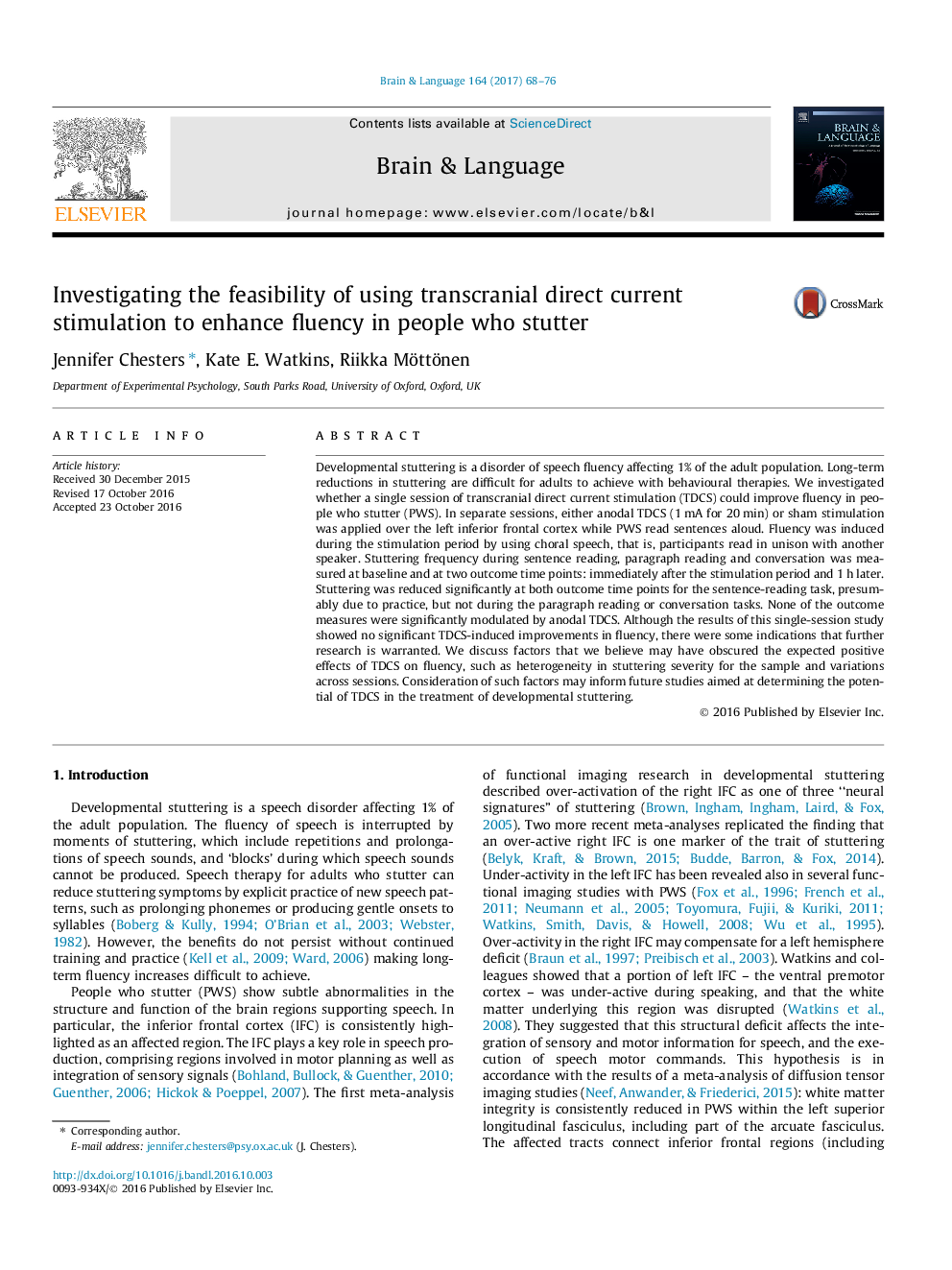ترجمه فارسی عنوان مقاله
تحقیق در مورد امکان استفاده از تحریک جریان مستقیم ترانس کرانانیال برای افزایش استعداد در افرادی که لکنت دارند
عنوان انگلیسی
Investigating the feasibility of using transcranial direct current stimulation to enhance fluency in people who stutter
| کد مقاله | سال انتشار | تعداد صفحات مقاله انگلیسی |
|---|---|---|
| 122164 | 2017 | 9 صفحه PDF |
منبع

Publisher : Elsevier - Science Direct (الزویر - ساینس دایرکت)
Journal : Brain and Language, Volume 164, January 2017, Pages 68-76

